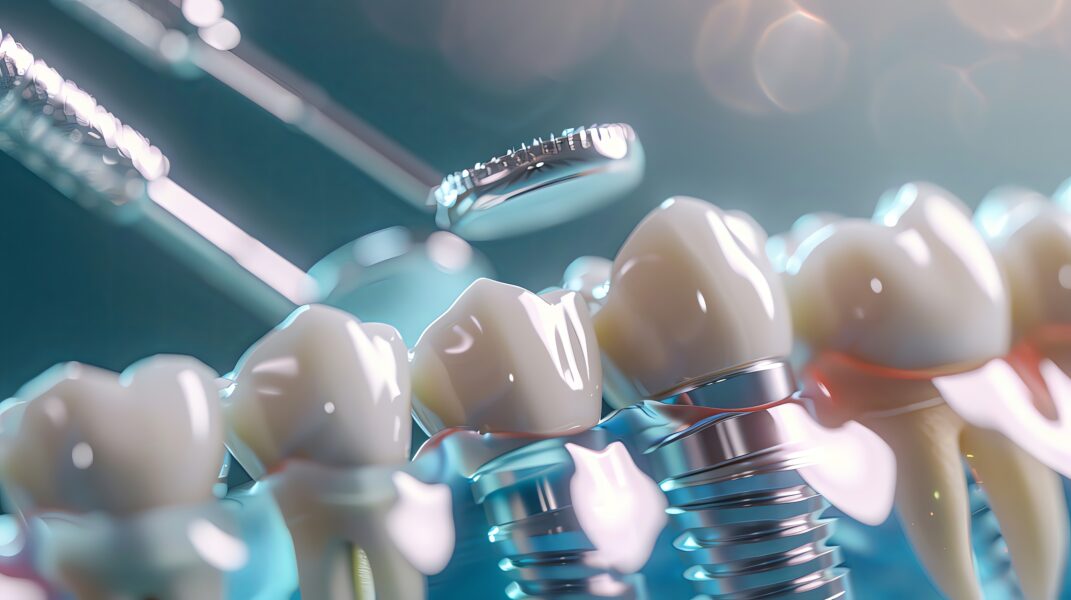
Bone Grafting for Dental Implants: Restoring Bone Density for Oral Implant Success
While it’s no secret that dental implants have revolutionized the way we address missing teeth, not all patients have the bone density needed to support them. Adequate bone density is required for the stability and longevity of implants. It provides the necessary support for the posts to integrate seamlessly with the jawbone. When inadequate jaw bone is a problem, bone grafting is a viable solution.
Let’s look at what dental implants can do for your smile and how bone grafting can help you create a strong foundation for your restoration.
A Brief Look at Dental Implants
Dental implants are an effective and natural-looking solution for missing teeth, helping patients restore the function and healthy appearance of their smile. A typical implant contains three main components, including:
- Post: This small, screw-like device is generally made from titanium or another biocompatible material. During the procedure, it’s surgically implanted into the jawbone, serving as a replacement tooth root.
- Abutment: This connector piece attaches the implant post to the crown. It protrudes through the gum tissue and creates a stable surface where a fake tooth can fit.
- Crown: The crown is the visible part of the tooth that can be made in different colors, sizes, and shapes to look like the rest of your teeth. Once manufactured, the custom crown is attached to the abutment to complete the restoration.
While many factors can influence the success of dental implant surgery, bone density is among the most important. Insufficient bone density can lead to implant failure and other complications, so improving bone density is essential for successful implantation.
The Role of Bone Density in Implant Success
Bone density directly influences the long-term success of dental implants. Implants rely on the surrounding jawbone to provide the support and stability to withstand biting and chewing forces without shifting or moving.
Adequate bone density also supports smooth osseointegration, a process in which the implant fuses with the surrounding bone. A strong bond with the implant surface is critical for the long-term success of the implant. Insufficient bone density can actually impede this process, resulting in weaker integration and possible complications.
Bone Grafting: What Is It and How Does It Work?
The bone grafting process begins with an initial assessment to determine whether the procedure is necessary and to create a detailed treatment plan. Imaging is often needed to evaluate bone density, followed by a clinical evaluation that includes a comprehensive gum assessment.
The area requiring grafting is numbed using a local anesthetic during bone grafting. An incision is made in the gum tissue to reach the underlying bone. The bone graft material is placed in areas that lack bone density. In some cases, the graft material may need to be secured with membranes or tiny screws. Finally, the incision is closed to allow the graft to integrate with the existing bone.
After the procedure, the graft material can integrate with the existing bone through osseointegration, which can take two to three months. However, full integration can take four to six months, depending on the patient’s unique healing response and the type of graft material used.
Success Rates and Outcomes
Dental implants are considered one of the most reliable solutions for missing teeth, with a 97% success rate at ten years and 75% at twenty years. However, several factors, such as a patient’s overall health, can significantly impact their outcome. Conditions such as diabetes, autoimmune disorders, and poor oral hygiene can negatively affect healing.
The oral surgeon’s experience and skill are also necessary. Proper technique and precise placement ensure the graft material integrates appropriately with the bone. Patients should always adhere to post-operative instructions to prevent infection, manage pain, and increase the likelihood of successful surgery.
Schedule an Appointment Today
Bone grafting offers patients who would otherwise be unable to undergo dental implant surgery the opportunity to restore the function and aesthetics of their smile. Schedule an appointment today with Twin Rivers Periodontics in Jacksonville, FL, to determine if bone grafting is right for you.